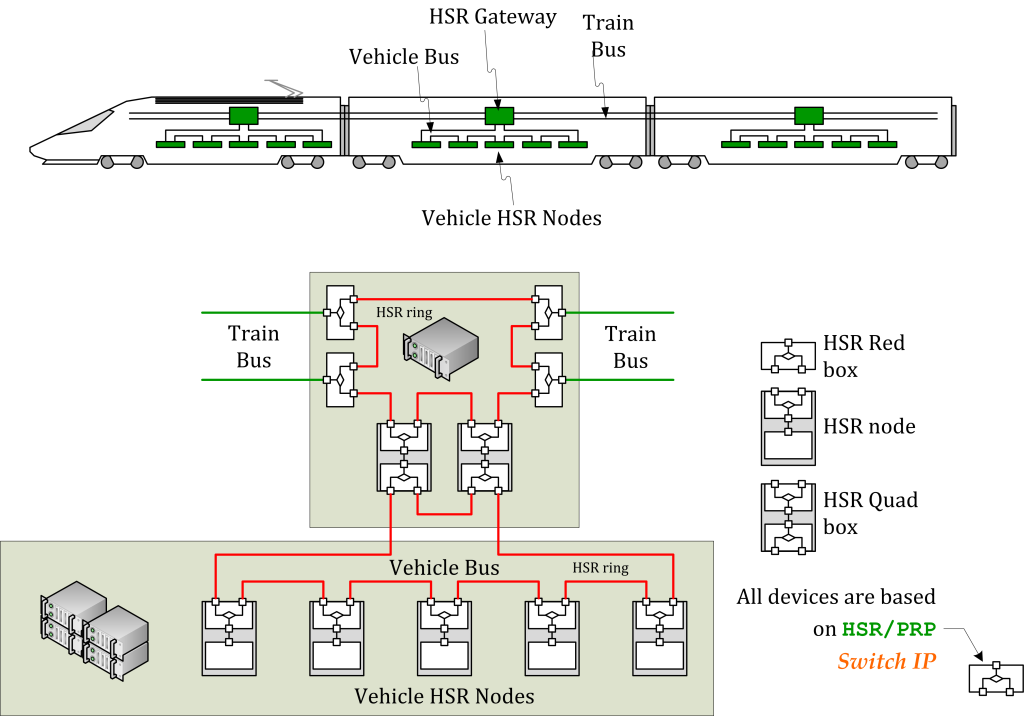The railway sector demands a new backbone for the train communication. Nowadays, train manufacturer companies offer modern trains equipped with the most powerful communication networks, in order to provide critical control of the train operation and, on the other hand, comfort to passengers. The demand for higher data bandwidth increases while the need for safe, secure and reliable networks is a must.
The following presentation summarizes some of the hot topics in the Sector that can be addressed using SoC-e Technology.
When new sophisticated electronic equipment was introduced in trains in the 80’s, it was necessary to use communication systems to exchange data. There were several field buses provided by manufacturers but they have some troubles to be used in the critical requirements of massive transportation systems.

- SoC-e based TCN -
In 1999 a train on-board communication standard was published by the IEC, known as IEC 61375 or TCN (Train Communication Network). This standard has turned into the international approach for these troubles. However, the need of enormous bandwidth has forced TCN to integrate and to take advantage from Ethernet networks. This integration, though, could harm reliability, safety and real time features of TCN. In this context, the Parallel Redundancy Protocol (PRP) and the High Availability Seamless Redundancy (HSR) protocols arise as effective solutions to comply with all these requirements. In addition, an Ethernet- TCN network integrating PRP and HSR enables to manage redundancy and varying compositions in a natural way.
In terms of availability, as a comparison, the typical switchover (time required to find and use new routes in the network) of different protocols and typologies are shown:
- Standard IP Protocol : 10s
- Rapid Spanning Tree Protocol (RSTP): 1s
- Media Redundancy Protocol (MRP): 100ms
- Coupled Redundancy Protocol (CRP): 400ms
- Parallel Redundancy Protocol (PRP): zero recovery time.
- High Availability Seamless Redundancy (HSR): zero recovery time.
Another driver technology for OT/IT integration within the sector is the Deterministic Ethernet. From the manufacturer and integrator point of view, a network capable of merging time-critical data with high-bandwidth best-effort one is a valuable technology. In this sense, Time-Sensitive Networking (TSN) ensures interoperability among vendors and a reliable base for safety-aware systems. TSN is standardized by IEEE 802.1 TSN Task Group.
SoC-e solutions for the Railway sector
SoC-e offers to train and signaling manufactures a complete portfolio of IP cores and modules to integrate these technologies. From turn-key projects that may include hardware and software design till ready-to-plug networking modules. Among other products, SoC-e targets Train sector with the following products:
- 1588-aware Managed Ethernet Switch IP with Industrial Field buses support: MES IP
- HSR/PRP Switch IP: HPS IP
- IEEE 1588 IPs: PreciseTimeBasic and 1588Tiny IPs
- Multiport Time-Sensitive Networking Switch IP: MTSN Switch IP
Apart from IP Cores, we also develop Networking Modules or SoMs, specially developed for these kind of applications.

